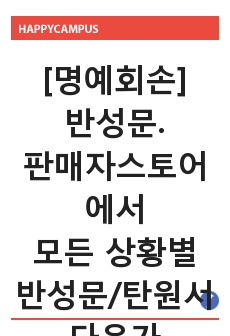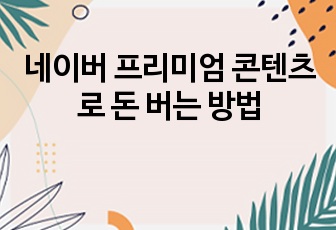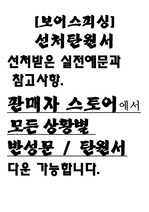漢文科 교원양성교육과정의 基本履修科目 구성과 운영 방안
* 본 문서는 배포용으로 복사 및 편집이 불가합니다.
서지정보
ㆍ발행기관 : 한국한자한문교육학회
ㆍ수록지정보 : 漢字漢文敎育 / 37권
ㆍ저자명 : 李東宰
ㆍ저자명 : 李東宰
목차
▮ 국문초록Ⅰ. 緖論
Ⅱ. 기본 이수과목의 내용
Ⅲ. 교육과정의 현황과 특징
Ⅳ. 구성과 운영방안의 모색
Ⅴ. 結論
▮ 參考文獻
▮中文摘要
▮ Abstract
한국어 초록
본고는 우리나라의 한문교사를 양성하는 10개 사범대학을 중심으로 각 대학의 교육과정을 교육부에서 제시한 한문교사 양성을 위한 기본이수과목을 중심으로 그 운영 실태를 살펴보고, 개선점을 찾아보았다.중등 한문교사의 자격 기준은 대범주로 한문문화의식, 교과지식, 학습자의 이해, 수업능력, 학습평가 능력 등이 있고, 그 세부기준이 20가지가 있으며, 이에 필요한 기본이수과목인 한문교육론, 경서강독, 한문문법, 문자학개론, 한문학개론, 한문학 사, 한문국역연습, 한시선독, 한문소설선독, 역대산문선독 등 10개 과목이 있다.
먼저,우리나라의 10개 사범대학 한문교육과의 교육과정 운영 현황을 기본이수과 목을 중심으로 살펴보았다. 교과교육학과 관련된 한문교육론이나 교재연구 및 지도법은 거의 모든 대학이 강좌를 개설하고 있으나 평가와 관련된 강좌의 개설이 거의 없었다. 교과 내용학에 있어서도 경전강독은 학교마다 편차가 매우 심하여 2개 강좌 에서 7개 강좌까지 다양하였고, 한문문법과 문자학개론, 한문학개론은 10개 대학이 1강좌씩을 개설하고 있었다. 한문학사는 7개 대학이 2강좌를 개설하고 1개 대학은 4강좌를 개설하기도 하였고, 한문국역연습은 5개 대학이 1강좌를 2개 대학이 2강좌 를 개설하였으며, 2개 대학은 1강좌도 개설하지 않았다. 한시선독은 2강좌에서 5강 좌를 개설한 대학이 있었으며, 한문소설선독은 8개 대학이 1강좌를 개설하고 있었 으며, 산문선독은 3강좌에서 7강좌까지 다양하게 개설하고 있었다. 그러나 한문문화 의식과 관련된 교과는 교과목의 명칭 상으로는 살펴볼 수가 없었다.
다음으로, 교육과정의 구성과 운영 방안을 모색해 보았다. 첫째, 교과지식의 내 용에 대한 재편이다. 한문지식에 있어서도 경서강독과 문자학개론 등, 일부 강좌 는 그 내용의 중요도, 난이도, 범위 등으로 강좌를 더 많이 확보하여야 한다. 그리 고 한문의 특성상 文·史·哲 비중의 하한선을 두어 최소한의 이수가 이루어지도록 재편하여야한다. 둘째, 일상의 언어생활에 활용하고, 도구교과적 성격을 구현하기 위한 교과목의 개설이 필요하다. 셋째, 한문과의 목표 가운데 하나인 한자문화권 의 문화를 이해하고 상호협력하며 이해를 증진하기 위한 강좌의 개설이 필요하다. 넷째, 한문문화를 이해할 수 있는 교과의 신설이 필요하다. 다섯째, 전통문화를 이 해할 수 있는 교과의 개설이 필요하다. 여섯째, 교수·학습 계획-실행-평가라는 교 육학의 원론적인 이해를 위해서라도 평가를 체계적으로 이해할 수 있는 평가관련 교과를 개설하여야 한다.
나아가 교사는 전문직이므로 엄격한 자격과 자질을 갖추어야 한다. 전문인인 교 사를 만들기 위해 교사의 책무성을 제고시킬 수 있는 교육과정의 운영이 필요하 다. 그리고 교육과정의 운영에 있어서 교과명과 내용요소가 일치하는가에 대한 문 제에 대한 진지한 논의가 있어야 한다.
영어 초록
This study surveyed curriculum operation in each of 10 colleges of education training Chinese classics teachers in Korea, focusing on the basic required courses for Chinese classics teacher education suggested by the Ministry of Education, and looked for related problems and solutions.Qualifications for secondary Chinese classics teachers include general qualities such as cultural consciousness of Chinese classics, subject knowledge, understanding of learners, teaching ability, assessment ability, etc., and 20 practical qualities. In addition, there are 10 basic required subjects, which are Teaching Curriculum and Teaching Methodology of Sino‐Korean Classics, Readings in the Confucian Classics, Chinese Classics and Grammar, Introduction to Chinese Characters, Introduction to Chinese Classic Literature, History of Chinese Classic Texts, Translation Practice of Chinese Classics, Selective Readings in Sino‐ Korean Poetry, Selective Reading in Chinese Classic Novels, and Selective Readings in Prose.
First, this study examined the curriculum operation of the Chinese Classics Education Department at 10 colleges of education in Korea, focusing on the basic required subjects. Courses related to subject pedagogics such as Teaching Curriculum and Teaching Methodology of Sino‐Korean Classics and Materials and Methods in Teaching Chinese Classics were offered in almost every college, but courses related to assessment were hardly found. With regard to subject contents as well, the number of courses for Confucian classic reading varied from 2 to 7, and all the 10 colleges opened Chinese Classics and Grammar, Introduction to Chinese Characters, and Introduction to Chinese Classic Literature. With regard to History of Chinese Classic Texts, 7 colleges offered 2 courses each, and 1 college offered 4 courses. For Translation Practice of Chinese Classics, 5 colleges offered 1 course each, 2 colleges offered 2 courses each, and 2 colleges did not offer at all. For Selective Readings in Sino‐Korean Poetry, some colleges offered 2‐5 courses each, and for Selective Reading in Chinese Classic Novels, 8 colleges offered 1 course each. For Selective Readings in Prose, the colleges offered 3‐7 courses each. Based on subject name, however, no subject related to Cultural Consciousness of Chinese Classics was found.
Next, this study looked for strategies for the composition and operation of curriculum. First, the contents of subject knowledge need to be restructured. With regard to the knowledge of Chinese classics as well, some subjects including Readings in the Confucian Classics and Introduction to Chinese Characters need to offer a larger number of courses according to the importance, difficulty, and scope of contents. In consideration of the characteristic of Chinese classics, there should be a lower limit in the percentage of literature, history, and philosophy so that the students may complete at least the minimum requirement. Second, it is necessary to open courses for utilizing Chinese classics in daily language life and to implement the nature of tool subject. Third, it is necessary to open courses for understanding culture in the cultural region of Chinese character, which is one of the goals of Chinese classics education, and to promote mutual cooperation and understanding. Fourth, new subjects need to be developed for understanding the culture of Chinese classics. Fifth, subjects for understanding traditional culture should be opened. Sixth, for understanding the basics of education, which are planning, executing, and assessing teaching‐learning, assessment related subjects need to be offered so that the students may understand assessment systematically. Because teachers are professionals, they should be equipped strictly with required qualifications and qualities. Therefore, the curriculum should be operated in a way of training professional teachers and enhancing their accountability as a teacher. Moreover, serious discussions should be made on agreement between the name and contents of courses in curriculum operation.
참고 자료
없음태그
"漢字漢文敎育"의 다른 논문
 部首意符的教育價值17페이지
部首意符的教育價值17페이지 『新撰字鏡』 주요 聲符의 異體 現像 考察36페이지
『新撰字鏡』 주요 聲符의 異體 現像 考察36페이지 ‘漢文科 敎材 硏究’ 과목의 내용 구성32페이지
‘漢文科 敎材 硏究’ 과목의 내용 구성32페이지 论缩略作为汉字语素义的演变途径之一 - 从大陆2012年度新词新语谈起 -19페이지
论缩略作为汉字语素义的演变途径之一 - 从大陆2012年度新词新语谈起 -19페이지 港澳大學生辨認書寫簡化字調查與分析22페이지
港澳大學生辨認書寫簡化字調查與分析22페이지 以普通話・粵語或粵普雙語作為教學語言對香港小一學生識字的影響24페이지
以普通話・粵語或粵普雙語作為教學語言對香港小一學生識字的影響24페이지 20世紀前於越南漢字教學之考察17페이지
20世紀前於越南漢字教學之考察17페이지 Chinese Character Recognition at Preschool Level in Sin..39페이지
Chinese Character Recognition at Preschool Level in Sin..39페이지 The Compensatory Strategies for Solving Problems of Con..38페이지
The Compensatory Strategies for Solving Problems of Con..38페이지 小學語文教材一二年級識字教學理念及成效研究16페이지
小學語文教材一二年級識字教學理念及成效研究16페이지

















